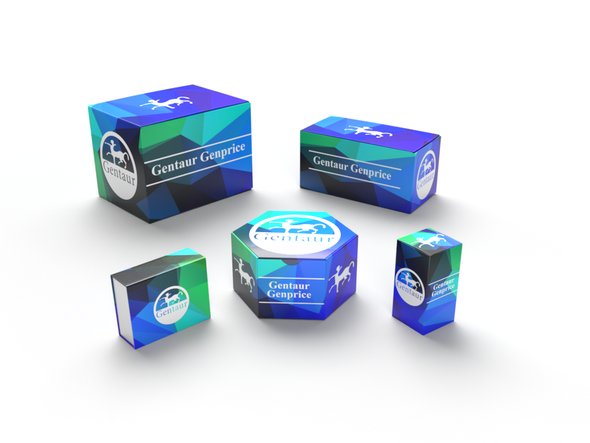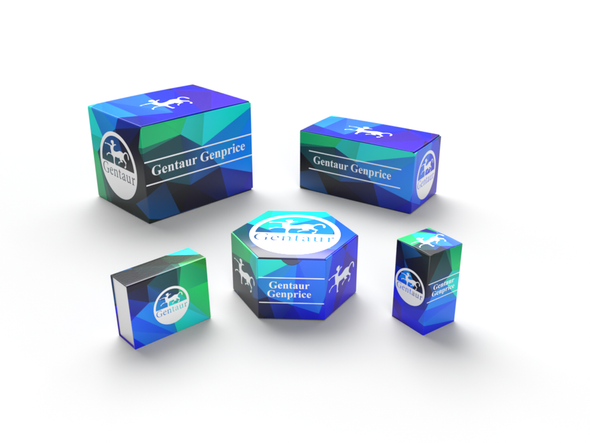749
Human Methyl-CpG-binding domain protein 3 (MBD3) ELISA Kit | KTE61703
- SKU:
- 749-KTE61703
- Availability:
- Usually ships in 5 working days
Description
Human Methyl-CpG-binding domain protein 3 (MBD3) ELISA Kit | KTE61703 | Gentaur UK, US & Europe Distribution
Application: This Human Methyl-CpG-binding domain protein 3 (MBD3) ELISA Kit employs a two-site sandwich ELISA to quantitate MBD3 in samples. An antibody specific for MBD3 has been pre-coated onto a microplate. Standards and samples are pipetted into the wells and anyMBD3 present is bound by the immobilized antibody. After removing any unbound substances, a biotin-conjugated antibody specific for MBD3 is added to the wells. After washing, Streptavidin conjugated Horseradish Peroxidase (HRP) is added to the wells. Following a wash to remove any unbound avidin-enzyme reagent, a substrate solution is added to the wells and color develops in proportion to the amount of MBD3 bound in the initial step. The color development is stopped and the intensity of the color is measured.
Detection Method: Colorimetric
Conjugate: N/A
Sample Type: Cell culture supernatants#Serum#Plasma#Other biological fluids
Assay Type: Multiple steps standard sandwich ELISA assay with a working time of 3-5 hours. It depends on the experience of the operation person.
Kit Component: • Human Methyl-CpG-binding domain protein 3 microplate
• Human Methyl-CpG-binding domain protein 3 standard
• Human Methyl-CpG-binding domain protein 3 detect antibody
• Streptavidin-HRP
• Standard diluent
• Assay buffer
• HRP substrate
• Stop solution
• Wash buffer
• Plate covers
Features & Benefits: Human Methyl-CpG-binding domain protein 3 (MBD3) ELISA Kit has high sensitivity and excellent specificity for detection of Human MBD3. No significant cross-reactivity or interference between Human MBD3 and analogues was observed.
Calibration Range: Please inquire
Limit Of Detection: Please inquire
Usage Note: • Do not mix components from different kit lots or use reagents beyond the kit expiration date.
• Allow all reagents to warm to room temperature for at least 30 minutes before opening.
• Pre-rinse the pipet tip with reagent, use fresh pipet tips for each sample, standard and reagent to avoid contamination.
• Unused wells must be kept desiccated at 4 °C in the sealed bag provided.
• Mix Thoroughly is very important for the result. It is recommended using low frequency oscillator or slight hand shaking every 10 minutes.
• It is recommended that all samples and standards be assayed in duplicate or triplicate.
Storage Instruction: The unopened kit should be stored at 2 - 8°C. After opening, please store refer to protocols.
Shipping: Gel pack with blue ice.
Precaution The product listed herein is for research use only and is not intended for use in human or clinical diagnosis. Suggested applications of our products are not recommendations to use our products in violation of any patent or as a license. We cannot be responsible for patent infringements or other violations that may occur with the use of this product.
Background: DPEP3 encodes a membrane-bound glycoprotein from the family of dipeptidases (EC 3.4.13.19) involved in hydrolytic metabolism of various dipeptides, including penem and carbapenem beta-lactam antibiotics. This gene is located on chromosome 16 in a cluster with another member of this family, DPEP2. The deduced 493-amino acid mouse protein contains several residues conserved among MBDs, including 6 cysteines, 3 histidines, and a glutamic acid that is important for catalytic activity. Mouse and human MBD3 share 68% amino acid identity. Northern blot analysis detected an Mbd2 RNA in mouse testis only. Phospholipase treatment released Mbd3 from transfected COS-7 cell membranes, indicating that Mbd3 is anchored to the membrane through glycosylphosphatidylinositol modification.
Alternative Names: MBD3
Search name: MBD3
Tag: MBD3






